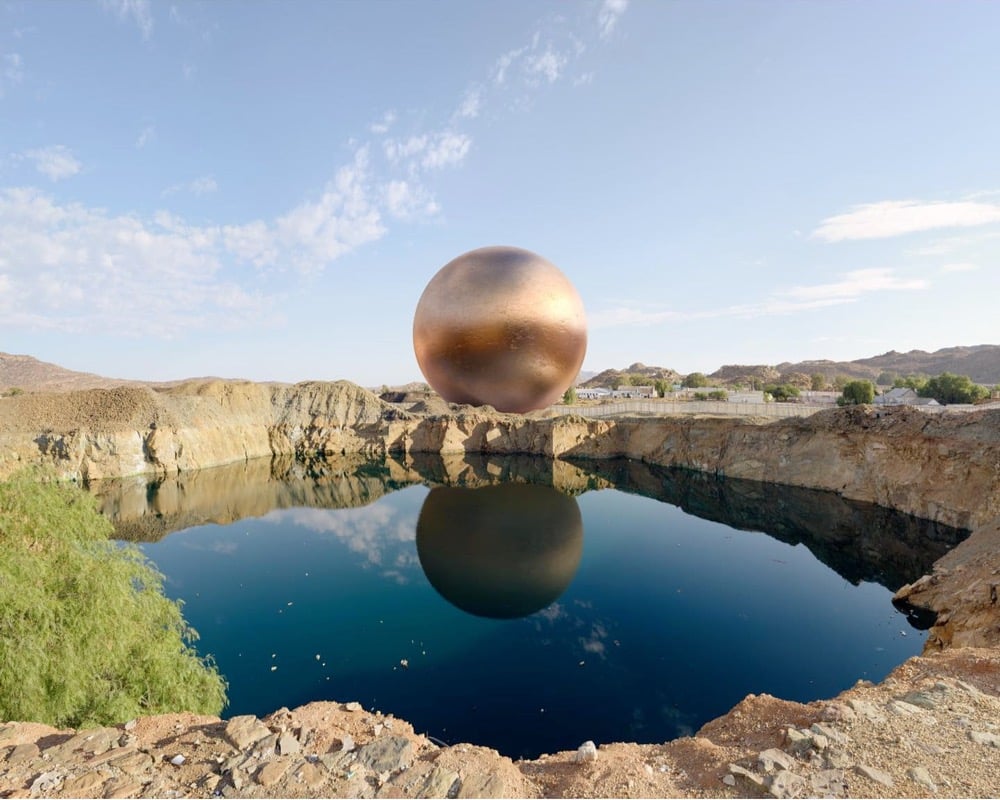
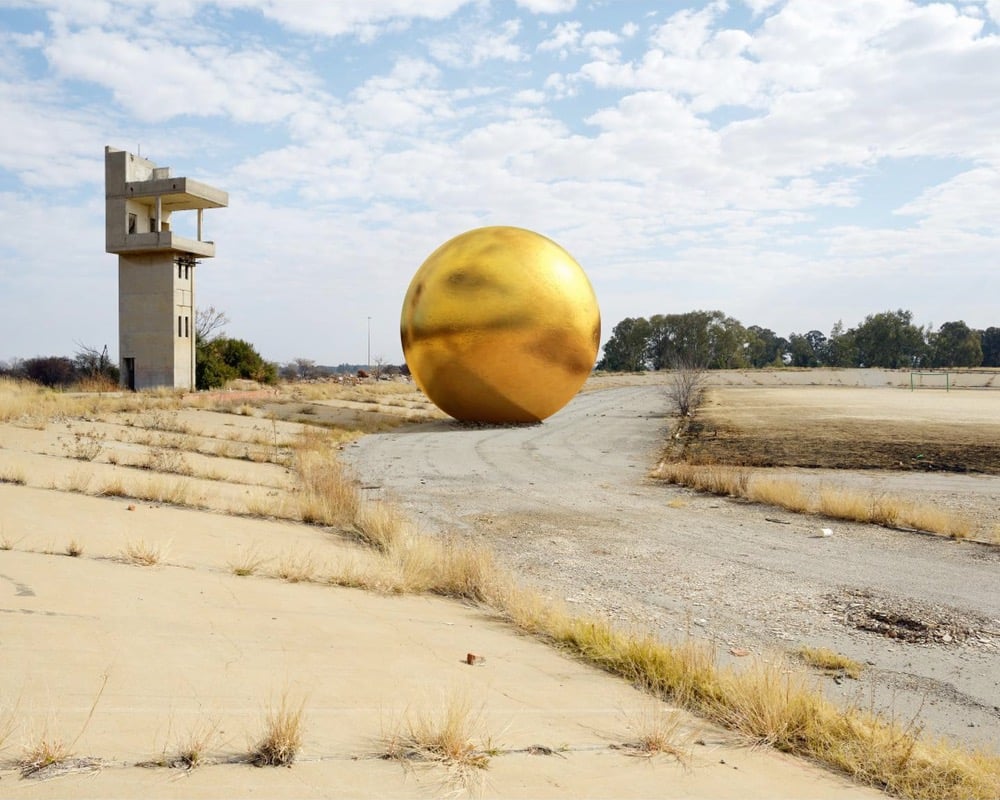
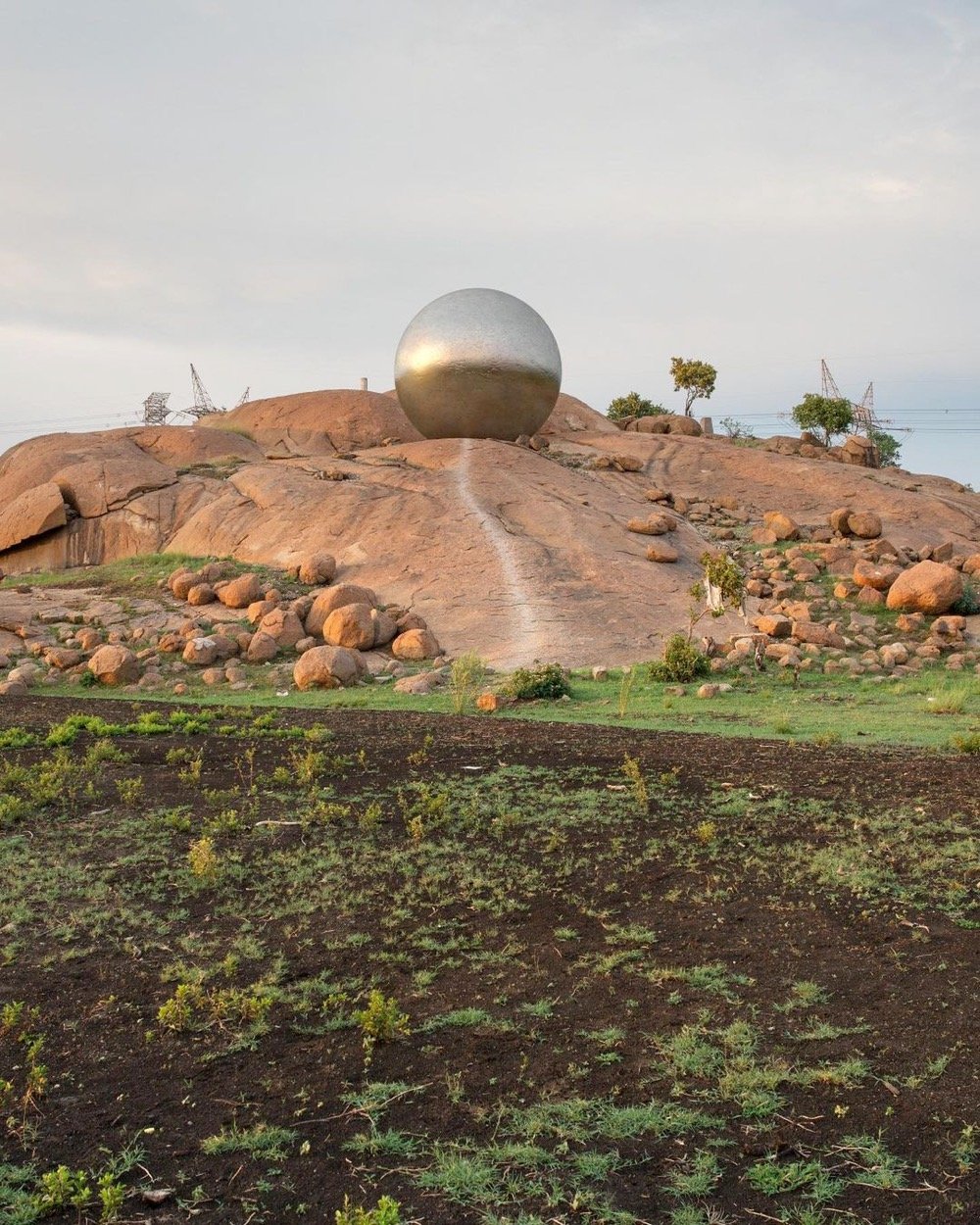
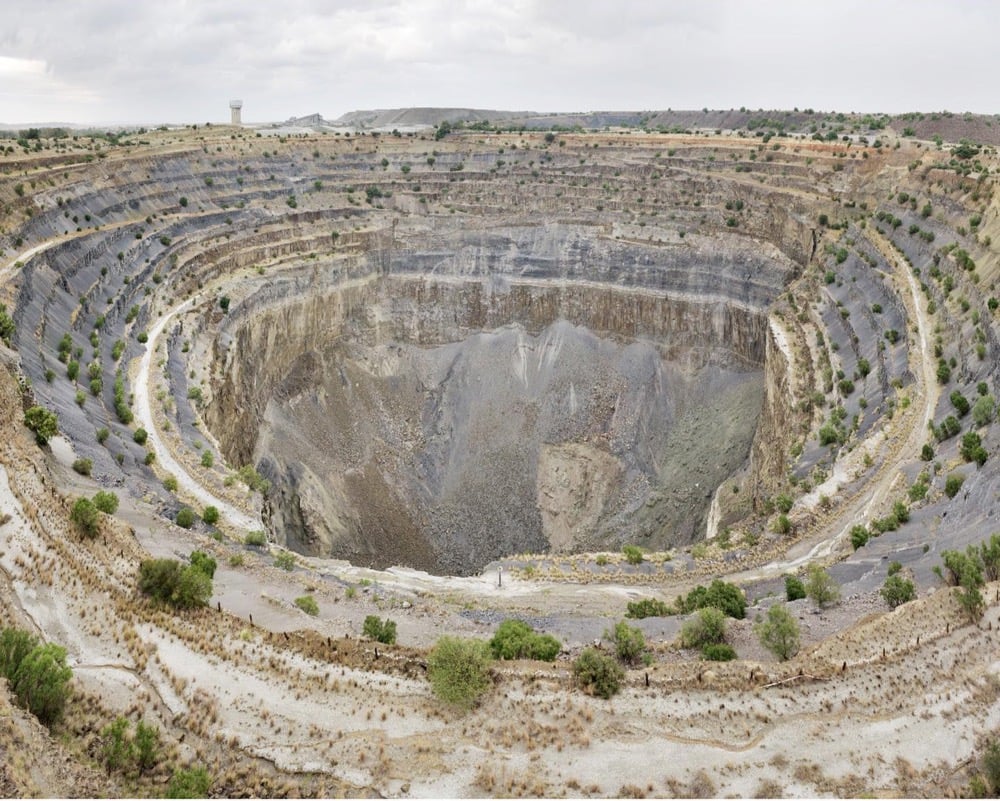
For his project For What It’s Worth, Dillon Marsh created 1:1 scale visualizations of the minerals extracted from South African mines and placed them in photos of the mines themselves. From top to bottom above, a sphere of the 284,000 metric tonnes of copper extracted from the O’Kiep mine, a sphere of the 9500 metric tonnes of gold from the Free State Gold Field, a sphere of 3850 metric tonnes of platinum extracted in total in South Africa since 1924, and a gemstone of the 7.6 million carats of diamonds extracted from the Koffiefontein Mine.
The diamond in particular, which you might not be able to see in that photo (it’s on a vertical stand right in front of the massive hole), underscores just how tiny the amount of material pulled out of these massive mines is, especially when you factor in all the manpower, machinery, injuries, fatalities, and environmental damage related to mining. All that for a bit of shine. (via clive thompson)
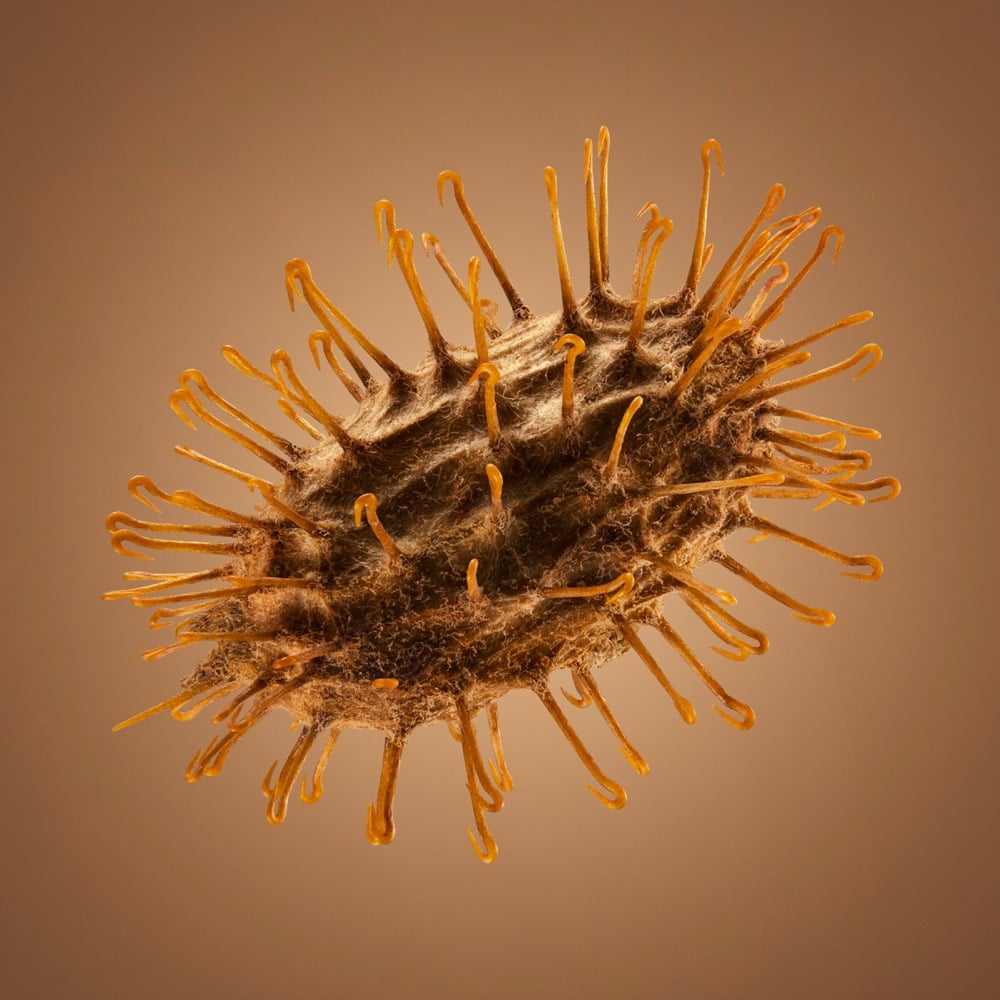
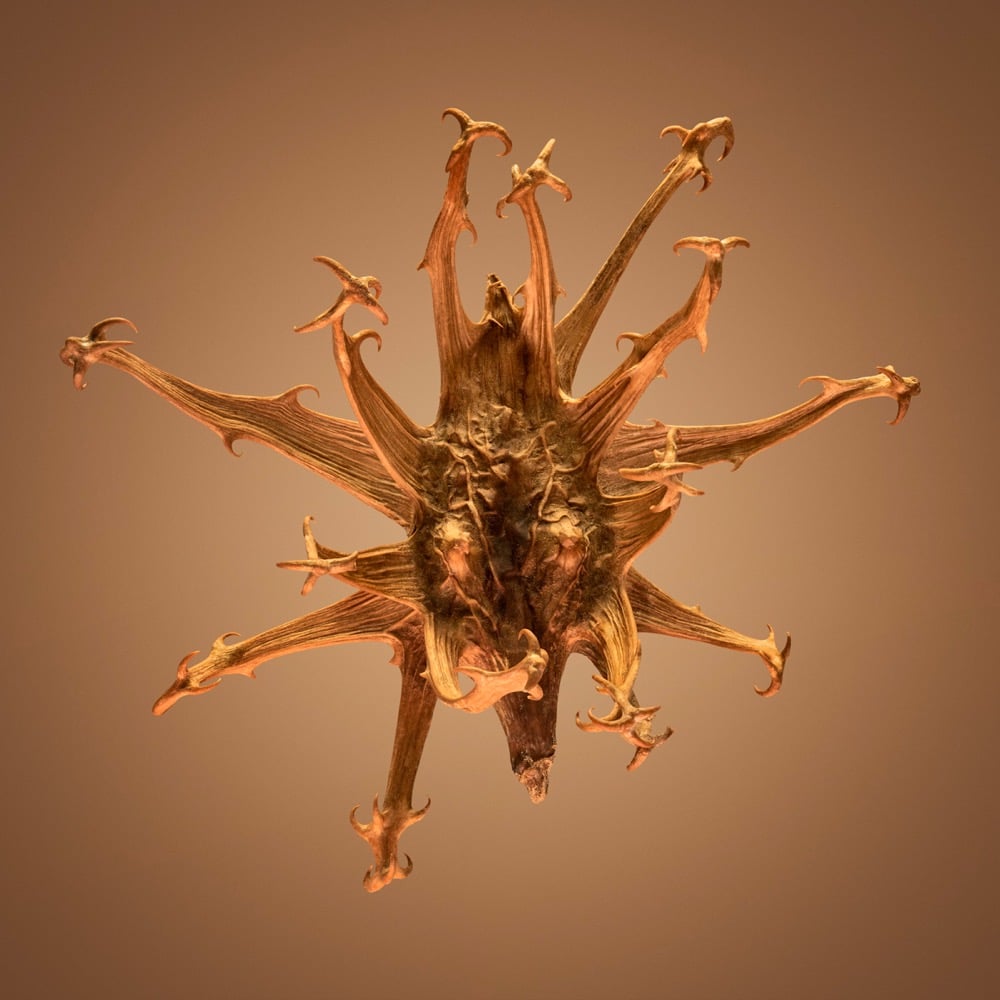
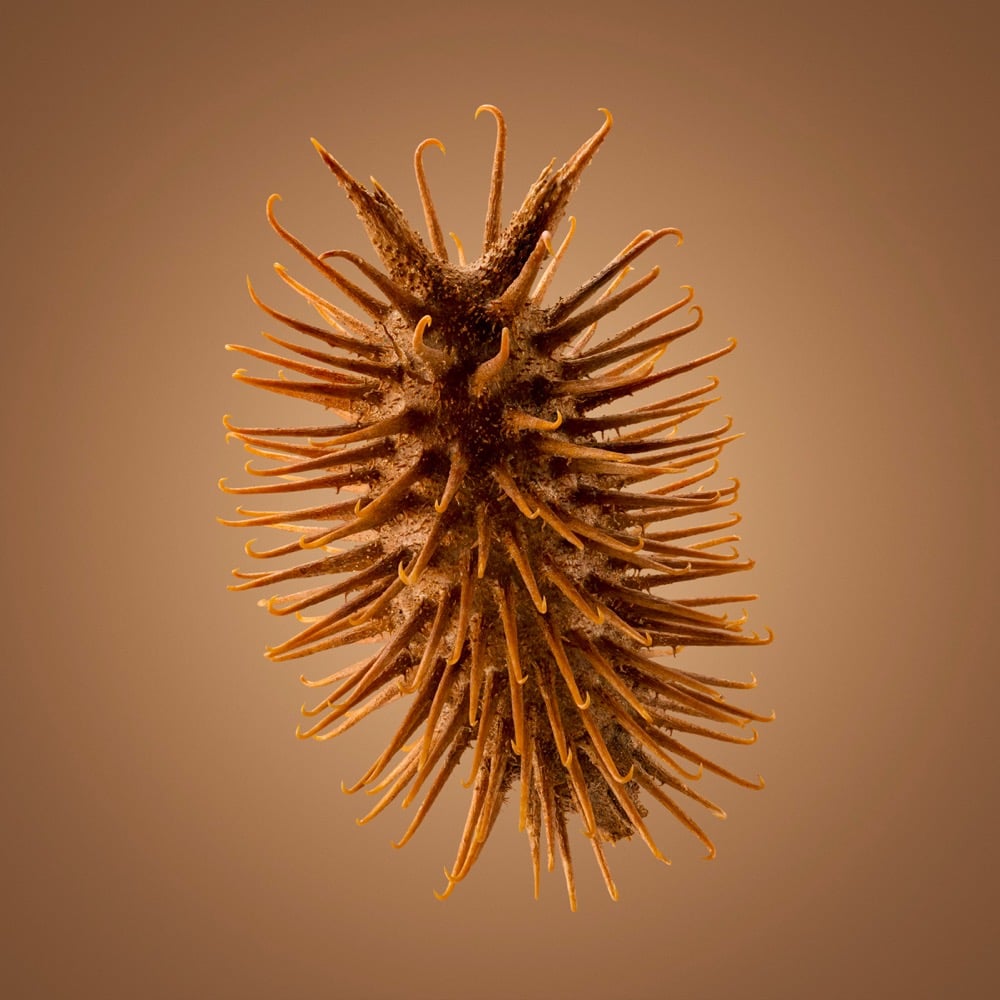
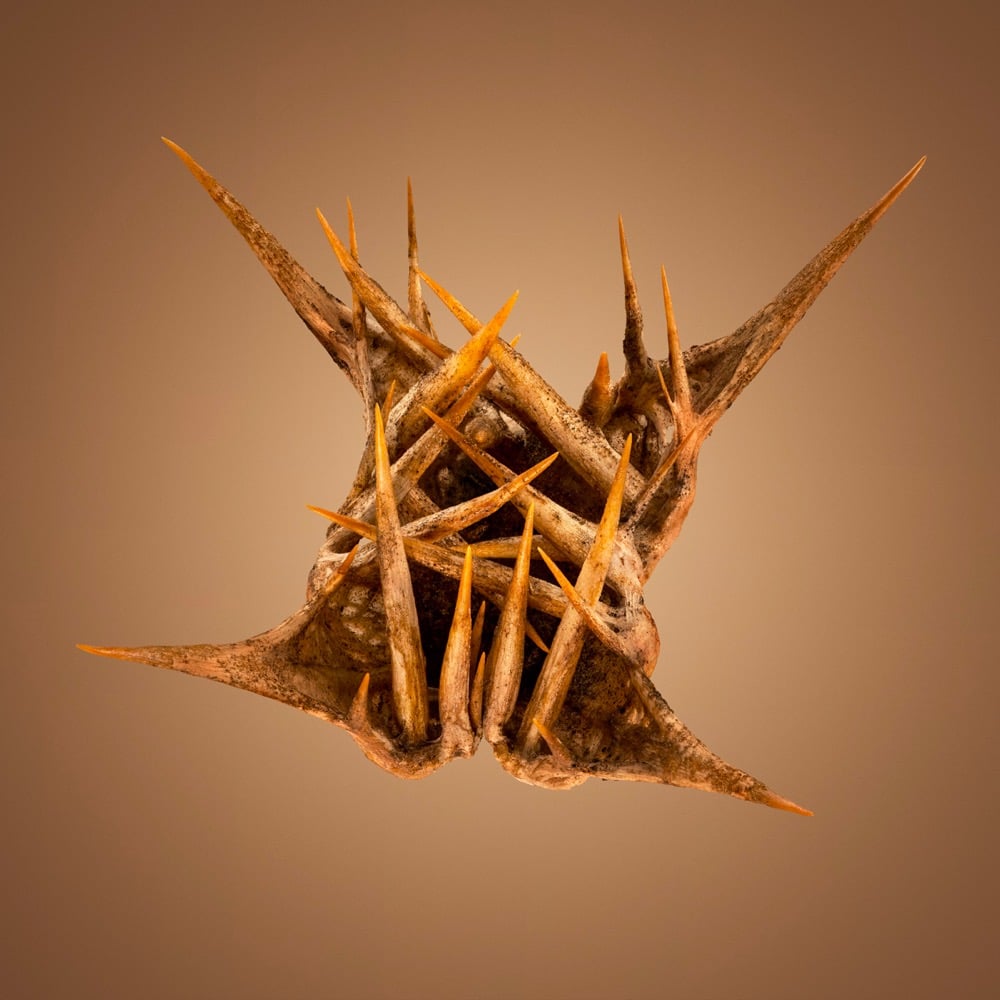
Those are a selection of Dillon Marsh’s macro photographs of the sneaky and clever seeds of various hitchhiker plants. The seeds of this type of plant can attach themselves to the fur, hair, clothing, or skin of animals, catching a ride in order to spread themselves over a wider geographic area in order to ensure a greater chance at survival.
In perhaps one of the best examples of biomimicry, a hitchhiker plant called the burdock was the inspiration for Velcro:
In 1941, George de Mestral had the inspiration for the hook and loop fastener while he was on a hunting trip in the Alps with his dog Milka. George noticed that burdock burrs — a tiny seed covered in hundreds of microscopic ‘hooks’ that catch onto the natural ‘loops’ that cover fur, clothing and hair — kept sticking to his dog’s fur.
This was the moment that George saw a huge opportunity. He spent the next decade with a microscope investigating how the burdock burr’s barbed, hook-like seeds engaged with the ‘loops’ on his trousers, trying to create a new type of clothing fastener.
(via moss & fog)
Dillon Marsh photographs cell towers disguised (poorly) as trees.
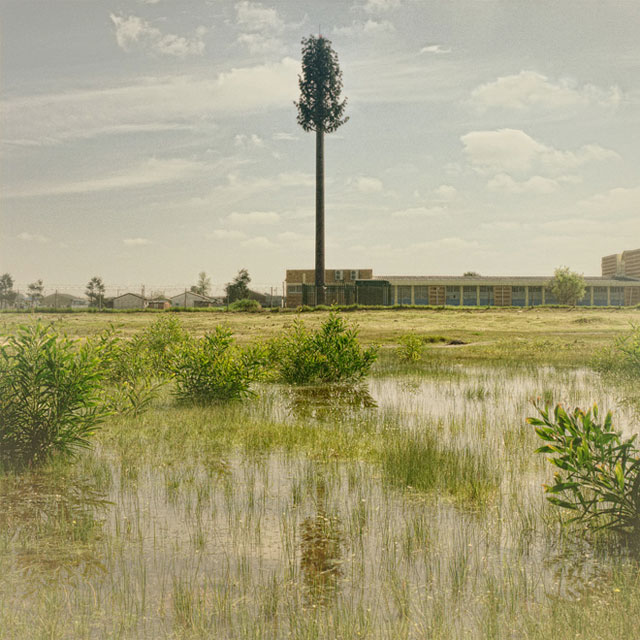
There’s one of these as you drive north out of NYC on the Hutch…it’s twice as tall as any other tree in the area, like a redwood that got lost while visiting its grandparents back east.














Stay Connected